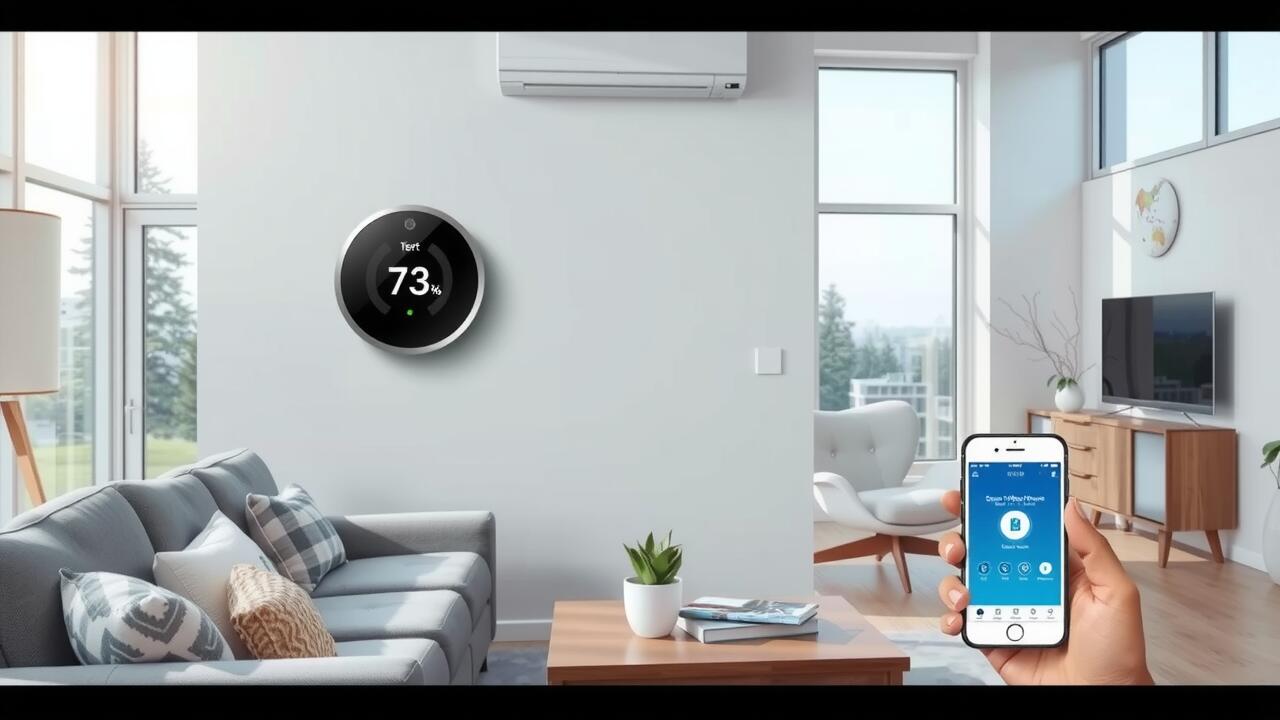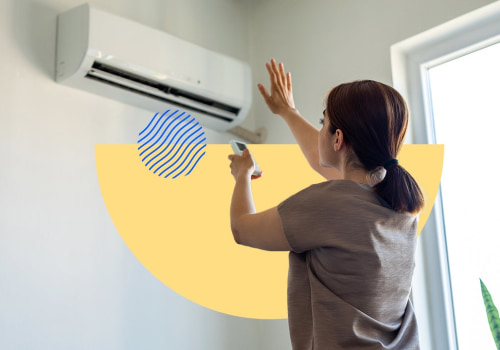Key Takeaways
- Benefits of advanced thermostat innovation
- Advantages of smart temperature control devices
- Reasons for enhancing to a smart temperature regulator post-setup
Advantages of Smart Thermostat Technology
Smart thermostats offer numerous advantages that elevate the efficiency of home heating systems. Enhanced energy efficiency is a prominent benefit, allowing users to reduce their energy consumption significantly compared to traditional programmable thermostats. The ability to remotely control and monitor settings via a smartphone app adds convenience and flexibility, making it easier to adjust temperatures on the go. Understanding Why Upgrading to a Smart Thermostat is Beneficial After Installation reveals that these devices not only optimize comfort but also integrate seamlessly with smart home systems. This is crucial for homeowners looking to improve both functionality and energy savings, ultimately leading to greater satisfaction with their heating system.
Enhanced Energy Efficiency
Smart thermostats significantly improve energy efficiency by optimizing the operation of heating and cooling systems. These devices utilize advanced algorithms to learn user preferences and adjust temperatures accordingly. By minimizing unnecessary heating and cooling, smart devices contribute to lower energy consumption and reduced utility bills over time. Regular maintenance and repair of these systems can further enhance their efficiency, ensuring that homes remain comfortable without wasting energy.
Energy efficiency directly impacts a home's environmental footprint, leading to reduced greenhouse gas emissions. By upgrading to a smart thermostat, homeowners can enjoy better temperature management while also contributing to a greener planet. Smart thermostats often allow for remote control, enabling users to turn down heating or cooling when away from home, thus preventing energy waste. This capability also helps reduce the proliferation of germs by maintaining a balanced indoor environment, making it a smart choice for health-conscious families.
- Smart thermostats can adjust temperatures based on occupancy patterns to save energy.
- Many models provide energy usage reports to help homeowners track and reduce consumption.
- They can integrate with other smart home devices for more comprehensive energy management.
- Some smart thermostats feature geofencing technology, which adjusts settings based on the homeowner's location.
- Users can optimize settings for different times of the day, improving overall comfort and efficiency.
- Installing a smart thermostat can qualify homeowners for energy efficiency rebates or incentives.
- They often support voice control, making it easy to adjust settings without manual input.
Remote Control and Monitoring
The ability to remotely control and monitor your HVAC system significantly enhances energy efficiency. Homeowners can adjust the temperature settings from their smartphones, allowing for greater flexibility in managing heating and cooling schedules. This convenience is particularly beneficial in smart buildings where various systems need to work in harmony. Understanding why upgrading to a smart thermostat is beneficial after installation can lead to more informed decisions in energy management.
Remote access to your thermostat is essential for optimizing comfort levels at home. Users can easily set specific temperatures or make adjustments based on occupancy patterns, contributing to a more tailored living experience. Upgrading to a smart thermostat allows for seamless integration with other smart devices, further streamlining the control of the HVAC system. This level of monitoring ensures that energy waste is minimized while enhancing overall performance and comfort.
Smart Thermostat Benefits
Smart thermostat systems provide significant advantages that enhance both comfort and efficiency in homes. These devices continuously monitor and adjust the temperature, ensuring a pleasant living environment without manual input. Opting for thermostat installation services to upgrade to the right smart thermostat can lead to remarkable cost savings over time. Smart a/c thermostat models offered by various manufacturers not only promise improved energy efficiency but also facilitate easier thermostat replacement when necessary. Understanding why upgrading to a smart thermostat is beneficial after installation can further motivate homeowners to embrace these innovative solutions, ultimately leading to a more connected and convenient living experience.
| Benefit | Description | Potential Savings | Compatibility |
|---|---|---|---|
| Energy Efficiency | Automatically adjusts temperature based on habits | Up to 30% on heating and cooling bills | Works with most HVAC systems |
| Remote Access | Control settings via smartphone apps | Reduces unnecessary energy use when away | iOS and Android compatible |
| Learning Capability | Adapts to your schedule and preferences | Further savings over time with personalized settings | Integrates with smart home systems |
| Energy Reports | Receive feedback on energy usage trends | Better understanding can lead to more savings | Compatible with Wi-Fi networks |
Cost Savings Over Time
Upgrading to a smart thermostat can lead to significant cost savings over time. Outdated thermostats often fail to maintain optimal thermostat settings, leading to unnecessary energy consumption. By utilizing a thermostat app, thermostat owners can efficiently manage their heating and cooling systems from anywhere. The new thermostat features allow for automatic adjustments based on usage patterns, reducing energy waste compared to an old manual thermostat.
Proper thermostat placement also plays a crucial role in energy efficiency. Many old thermostats are inaccurately placed, affecting temperature readings and leading to higher energy bills. With a smart thermostat, users can take advantage of advanced sensors that respond more accurately to environmental changes. Understanding why upgrading to a smart thermostat is beneficial after installation highlights how these devices can help users save money over time while enjoying improved control of their indoor climate.
Improved Comfort and Convenience
Upgrading to a smart thermostat brings significant improvements in comfort and convenience compared to traditional thermostats. A digital thermostat provides the ability to set specific temperatures for different times of day, ensuring that your home is always at the ideal temperature when you need it. With a smart wifi thermostat or a wifi-programmable thermostat, homeowners can make adjustments on the go using their smartphones. This level of control allows for a more tailored heating experience, minimizing discomfort caused by temperature fluctuations.
A key aspect of smart heating technology is its ability to learn your preferences over time. By analyzing your habits, the up-to-date thermostat can automatically adjust settings to optimize comfort levels without any manual input. This makes it a beneficial upgrade for those who value convenience and want to streamline their home environment. Understanding why upgrading to a smart thermostat is beneficial after installation can lead to a more comfortable living space, elevating your overall home experience.
Why Upgrading to a Smart Thermostat is Beneficial After Installation
Upgrading to a smart thermostat significantly enhances heating system efficiency, making it a wise choice for homeowners aiming to optimize their energy usage. Traditional mercury-based thermostats lack the precision and adaptability that smart technology offers. By accurately responding to heating and cooling needs, these devices maintain an optimal cooling system in summer and an effective heating system in winter. Why upgrading to a smart thermostat is beneficial after installation becomes evident as you experience more consistent temperatures and reduced energy costs over time. With the ability to remotely control your home’s climate, comfort and convenience are vastly improved, ensuring that your living environment is always at the desired temperature.

Better Temperature Management
Upgrading to a smart thermostat provides enhanced control over your entire heating and cooling settings. By leveraging advanced technology, these devices learn your heating habits and adjust automatically, ensuring optimal comfort all year round. The hassle-free installation process means you can quickly switch from standard heating systems to a more efficient solution. This level of precise temperature management leads to a significant improvement in energy use.
Smart thermostats allow you to fine-tune your home's climate based on your routine. With the ability to set schedules and receive real-time updates, you can create a personalized environment that accommodates your lifestyle. Why upgrading to a smart thermostat is beneficial after installation becomes evident as you experience a noticeable difference in your home's temperature consistency and overall comfort. This upgrade not only modernizes your home but also maximizes efficiency throughout the year.
Integration with Smart Home Systems
Smart system integration is a key feature of modern smart thermostats, making them a valuable addition to any home. The technology allows for seamless control of combined heating and cooling systems, ensuring that temperature settings are optimized based on your preferences. By connecting smart thermostats to compatible HVAC systems, homeowners can take full advantage of programmable device features, enhancing their energy efficiency and comfort levels.
The appeal of Why Upgrading to a Smart Thermostat is Beneficial After Installation lies in its ability to work harmoniously with other smart devices in the home. This integration not only simplifies the management of heating and cooling equipment but also enables users to control all aspects of their home's environment from a single app. As a result, maintaining the perfect indoor climate becomes a smart thing to do, elevating the convenience of home management.
Conclusion
Upgrading to a smart thermostat is beneficial after installation due to its significant impact on heating costs and overall HVAC efficiency. These devices allow for better temperature management, ensuring that homes remain comfortable while minimizing energy waste. Through smart technology, users can monitor and control their heating systems remotely, leading to enhanced convenience and efficiency. Such upgrades can also help identify potential repairs before they escalate, reducing long-term maintenance expenses. Embracing smart thermostat technology ultimately leads to a smarter home environment and greater savings over time.
FAQS
What are the benefits of considering different smart thermostat options for your home when planning a smart thermostat upgrade?
Exploring various smart thermostat options can significantly enhance your home's energy efficiency and comfort. A smart thermostat upgrade allows the thermostat to adjust to your heating needs automatically, ensuring optimal temperature control. Additionally, leading smart thermostat manufacturers offer features that track your heating usage throughout the year, making it easier to manage your annual heating costs effectively.
How do smart thermostats enhance energy efficiency throughout the year after installation?
Smart thermostats significantly improve energy efficiency by intelligently adjusting the temperature based on your habits and preferences. As the smart thermostat adjusts to your daily routines, it can optimize heating and cooling, leading to lower energy bills throughout the year.
How can smart thermostats improve year-round heating efficiency in your home after installation?
Smart thermostats are designed to optimize your year-round heating by learning your schedule and preferences, allowing for efficient temperature adjustments. This ensures that your thermostat adapts to changes in your home environment, ultimately leading to better energy conservation throughout the year.
What advantages does a smart thermostat offer in managing year-round heating in your home after installation?
A smart thermostat provides numerous advantages that enhance your home’s year-round heating. By learning your schedule and preferences, it can optimize temperature settings to maintain comfort while reducing energy consumption. This leads to significant savings on heating bills and a more efficient heating system overall. Additionally, smart thermostats often feature remote access, allowing you to adjust settings from anywhere, ensuring your home is always at the ideal temperature.
How can a smart thermostat contribute to better year heating solutions after installation?
A smart thermostat can significantly enhance your year heating solutions by enabling precise temperature control, optimizing heating schedules, and learning your preferences. After installation, it allows you to adjust temperatures remotely and monitor energy usage, leading to improved heating efficiency and lower energy bills throughout the year.
What long-term advantages can you expect from a thermosta after its installation in your home?
After installation, a thermosta can provide numerous long-term advantages, including improved energy efficiency, heightened comfort, and more precise temperature control, leading to significant energy savings over time.
What should I know about the different features of smart thermostats before making a choice for my HVAC system?
It's important to understand that modern smart thermostats come with various features that can greatly optimize your home's heating efficiency. By choosing the right thermostat, you can manage your HVAC system more effectively, leading to enhanced comfort and energy savings in the long run. Consider factors such as compatibility with your HVAC system, user-friendly interfaces, and smart learning capabilities that adapt to your schedule. A well-chosen thermostat can transform your heating management significantly.
What should I consider when choosing a thermostat for optimizing energy use in my home?
When selecting a thermostat, it's important to evaluate features that enhance energy efficiency, such as programmable settings, remote access, and learning capabilities, which allow your thermostat to adapt to your preferences and optimize heating and cooling for your home.
What features of a thermostat should I examine to maximize efficiency and comfort in my home?
When selecting a thermostat, you should consider features such as programmable settings, smart technology compatibility, and energy usage reports, all of which can help in optimizing the performance of the thermostat and reducing energy bills.
How can the use of a thermostat impact your home's overall energy consumption after installation?
The use of a thermostat can greatly impact your home's overall energy consumption after installation by optimizing heating and cooling schedules, thus contributing to more efficient energy use. A properly set thermostat can help maintain consistent temperatures, which leads to reduced energy waste and lower utility bills in the long run.











